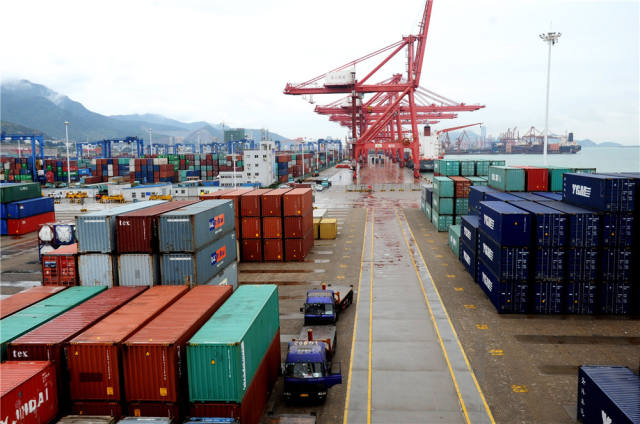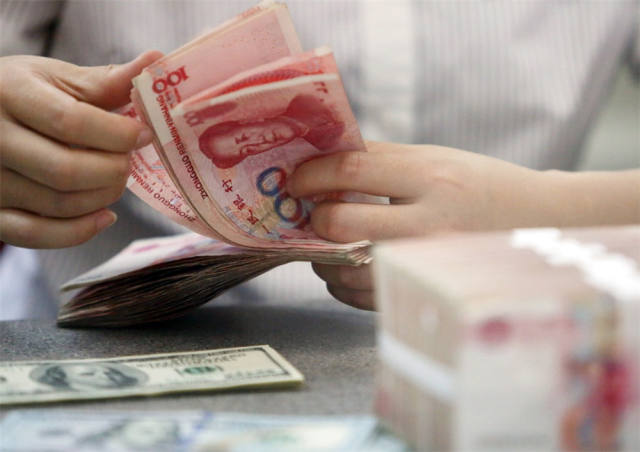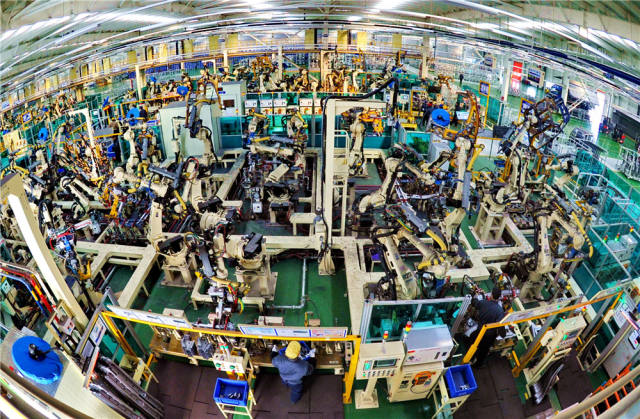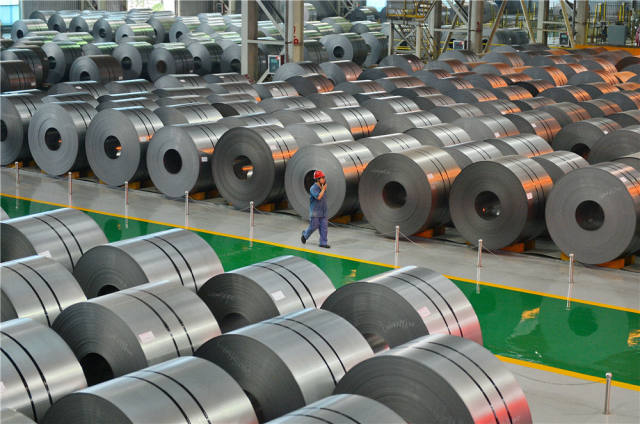In 2016, what western "arguments" about China’s economy will be broken?
Xinhua News Agency, Beijing, December 31 ST, new media special topic: Seven "arguments" about China’s economy are self-defeating
Xinhua news agency reporter
In 2016, against the background of increasing uncertainties in the world economy and weak recovery, China’s economy remained stable. From "economic collapse" to "local debt collapse", from "bursting of real estate bubble" to "sharp depreciation of RMB" — — The "argument" that the West is bearish on China’s economy has broken down again and again.
China’s hard landing?
Recently, under the background of increasing downward pressure on the economy, some institutions and individuals in the West have frequently made judgments about the "hard landing" of China’s economy. In 2016, China’s economic growth rate has been stable at 6.7% for three consecutive quarters, keeping it within a reasonable range, which strongly responded to these "prophets".

China’s economy did not have a "hard landing" and achieved a good start in the 13th Five-Year Plan. By promoting supply-side structural reform, moderately expanding aggregate demand, and firmly promoting reform, the economic structure will continue to be optimized. In the first three quarters, the added value of service industry accounted for 52.8% of GDP, the contribution rate of consumption to economic growth was as high as 71%, and strategic emerging industries and high-tech industries grew at a rate of more than 10%.
Facts show that China’s economy has a good foundation to maintain medium-high speed growth, and its power is stronger. Those who sing empty about China’s economy will be disappointed again.
The RMB has depreciated sharply?
At the beginning of 2016, the exchange rate fluctuation of RMB against the US dollar once intensified, which caused concern in the financial market. Some analysts even interpreted the continued weakness of RMB as a signal that China’s economy was on the verge of collapse.
Since the beginning of this year, the RMB has indeed depreciated to a certain extent against the US dollar, with a depreciation of about 7% during the year. However, the RMB has remained stable against a basket of currencies and has appreciated against some major currencies other than the US dollar.

Experts said that the RMB exchange rate will still be under some pressure in the short term due to the strong dollar. However, China’s economic fundamentals are solid, structural adjustment has made progress, there is still room for macroeconomic policies, and the direction of reform is increasingly clear. There is no basis for the continued depreciation of the RMB exchange rate. The Central Economic Work Conference, which concluded a few days ago, proposed that China should "enhance exchange rate flexibility while maintaining the basic stability of RMB exchange rate at a reasonable and balanced level" next year.
China is a drag on the world economy?
In 2015, China’s economic growth rate hit a new low in nearly 25 years. At the beginning of 2016, American investor george soros declared that China’s economy would inevitably "hard landing" due to economic slowdown, debt burden, capital flight and other factors, and China would aggravate global deflation. There are also views that China will drag down the global economy.

Workers operate welding robots in Huanghua Shiyuan Automobile Technology Co., Ltd., located in Bohai New District, Cangzhou, Hebei Province. Xinhua News Agency reporter Yang Shizhen photo
However, the trend of China’s economy becoming more stable and stable has been basically established, and China will continue to be an important engine of world economic growth. Stephen Roach, a senior researcher at Yale University’s Jackson School of Global Affairs, recently wrote that if China’s economy achieves 6.7% growth in 2016, it will contribute 1.2 percentage points to the overall global economic growth. In proportion, China will contribute 39% to global economic growth.
China’s innovation-driven development strategy and continued economic restructuring will release huge demand and bring more opportunities to the global market.
Local debt collapse?
In recent years, China’s local government debt has been one of the focuses that the outside world pays attention to the risks in China’s financial market. The Economist once described China’s local debt problem as "a bomb waiting to be dismantled".
Although the local government debt risk in China is worthy of vigilance, some arguments are rather sensational. According to the latest official data, the local government debt ratio in China is lower than the international warning line, and also lower than the level of major market economy countries and emerging market countries. China has also taken a series of measures, including bond swap and deleveraging, to mitigate risks.
In November this year, the Ministry of Finance of China issued a series of policies and regulations to control the rise of local debt. Among them, the Emergency Response Plan for Local Government Debt Risk clearly divides the local government debt risk events in China into four levels, implements graded response and emergency response, and implements the local government financial restructuring plan according to law when necessary.
Real estate bubble burst?
Western market participants have predicted many times that the real estate market in China will collapse, which will cause a devastating blow to the entire China economy. In fact, the decision-makers in China have always been sober and highly vigilant about the risks in the real estate market, and have taken a series of control measures to reduce risks, which have begun to achieve results.
The data shows that after October, the growth rate of sales area and sales amount of commercial housing in the country fell again in November, and the real estate development boom index also showed a downward trend. Under the series of regulation, the property market in several hot cities gradually returned to rationality.

The just-concluded Central Economic Work Conference once again made it clear that "houses are for living, not for speculation". We should comprehensively use financial, land, fiscal, taxation, investment, legislation and other means to speed up research and establish basic systems and long-term mechanisms that are in line with national conditions and adapt to market rules, which will not only curb the real estate bubble, but also prevent ups and downs.
China is the source of the dilemma of the world steel industry?
Since the beginning of this year, China Steel has become a "thorn in the side" of some countries and regions. According to the data of the Ministry of Commerce, in the first 11 months of this year, China’s steel export products encountered 41 trade remedy investigations initiated by 16 countries and regions. There is an argument that China is the "culprit" of the global steel industry in trouble.
In fact, steel overcapacity originated from the financial crisis and the sluggish demand caused by the global economic downturn, which is a common problem faced by the global steel industry. Countries should make joint efforts to solve it, instead of just focusing on China.

As the world’s largest producer and consumer of steel, China is also the country with the earliest time, the most concrete action, the most resolute implementation and the most remarkable effect in the world. At present, China has completed the goal of reducing steel production capacity by 45 million tons in advance.
China’s investment environment has deteriorated?
Chris Wilson, deputy representative of the United States to the World Trade Organization, said in July this year that more and more American enterprises have expressed concern that China is "not as friendly to foreign investors as before" in terms of operating and regulatory environment.
The key to judge whether the foreign investment environment in China is deteriorating is to speak with data. In the first eleven months of this year, 24,355 foreign-invested enterprises were newly established in China, up 3% year-on-year. The investment of the United States and the European Union in China increased by 55.4% and 43.9% respectively. Foreign investment in high-tech service industry has almost doubled.
This year, China not only passed four legal amendments, including the Law on Foreign-funded Enterprises, but also introduced specific measures to simplify the examination and approval management of foreign-funded enterprises and create a fairer and more just investment environment for foreign investors.
China is using practical actions to prove that the protection of the legitimate rights and interests of foreign-invested enterprises will not change, and the direction of providing better services for foreign enterprises to invest in China will not change. (Reporter: Zhang Zhengfu, Liu Xinyong, Wang Yaguang, Zhang Zhongkai, Zheng Xin)